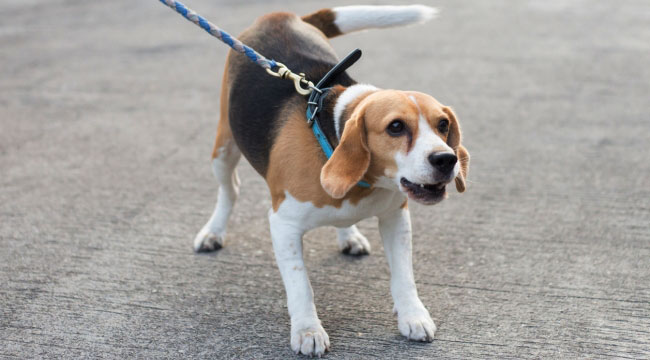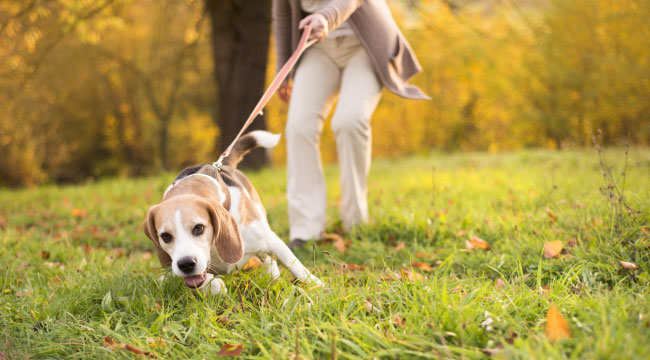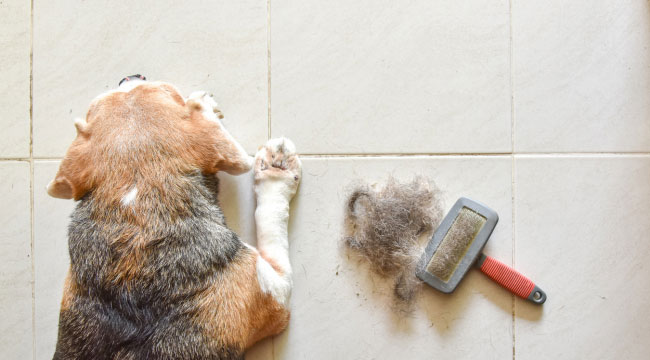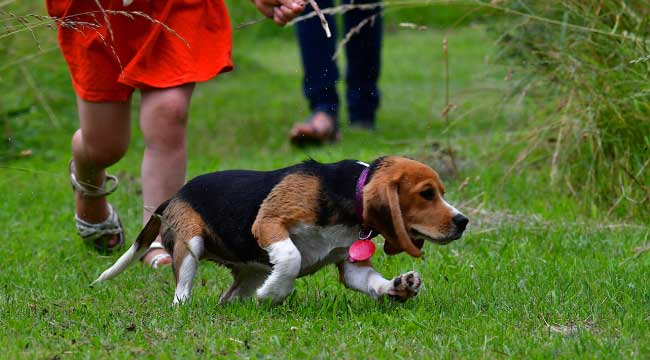
Why beagles are the worst dogs to have as pets? If you’re looking for a dog that’s easy to train and well-behaved, a Beagle might not be the best choice. Despite their cute appearance and friendly nature, Beagles are notorious for being difficult to control and prone to destructive behavior. Their origin as a scent hound used for hunting rabbits has resulted in a breed that’s single-minded, determined, and difficult to train. In this article, we’ll explore the reasons why Beagles are often considered the worst dogs to have as pets. From their high energy levels to their propensity for separation anxiety, we’ll take a closer look at what makes Beagles a challenging breed to own.
Table of Contents
- Why Beagles Are The Worst Dogs
- 1. Beagles are so Hard to Walk
- 2. Extremely Active
- 3. Beagles are Excessive Shedders
- 4. Beagles Can Be Quite Vocal and Bark a Lot
- 5. They Are Too Clingy
- 6. Stubbornness
- 7. Difficult To Train
- 8. Always a Hungry Dog
- 9. Easily Get Bored
- 10. Beagles Are Prone to Escaping
- 11. Beagles Have a Strong Hunting Instinct
- 12. Worst Dogs For Apartments
- 13. Destructive Behaviors in Beagles
- Conclusion
Why Beagles Are The Worst Dogs
Beagles are often seen as adorable pets, but they come with a complex nature that can make them a challenge for some owners.
Their high energy levels, stubbornness, and mischievous tendencies can make them difficult to train. They are also known for their vocal nature and tendency towards separation anxiety, which can result in destructive behavior when left alone.
Beagles are notorious escape artists and require secure areas when unsupervised. Their keen sense of smell can lead them into trouble, making it essential to keep them on a leash. In some cases, their hunting instincts can cause problems, with beagles chasing down deer and potentially causing harm.
While they can make excellent pets with the right owners, it’s important to understand their quirks and challenges before making the decision to bring one into your home. We will discuss each of these reasons in more detail below, so you can get a better understanding of why Beagles can be challenging pets to own.
Related Post: Teddy Bear Dogs
1. Beagles are so Hard to Walk

Beagles can be difficult to walk because they have a strong prey drive and love to follow their noses. These super-energetic scenthounds have a natural instinct to hunt and track scents, so they tend to pull on the leash and wander off in search of interesting smells. They can be stubborn and independent, making it challenging to get them to walk in a straight line or follow a set path. As a result, walking a Beagle can sometimes feel like a battle of wills, with the dog wanting to explore and the owner wanting to keep them on track. However, with patience, consistency, and positive reinforcement training, it is possible to teach a Beagle to walk calmly on a leash and turn walks into a relaxing experience for both the dog and the owner.
2. Extremely Active
Beagles are known for being extremely active dogs. As hound dogs, it’s in their nature to be curious and roam around. To prevent them from wandering off and getting into danger, it’s important to keep them contained in a fenced-in yard or on a leash when outside of the house. If a Beagle doesn’t receive enough exercise during the day, they can become frustrated and exhibit destructive behaviors such as digging holes, chewing, biting, and scratching. It’s important to note that even an inactive Beagle can become upset, destructive, or aggressive, as these dogs are known to be extremely temperamental and communicate their emotions clearly. If your Beagle is acting strange, it may be helpful to revisit their daily schedule and ensure they are getting enough exercise and mental stimulation.
Related Post: Silver labs
3. Beagles are Excessive Shedders

Beagles are not necessarily the worst dogs, but they do have some qualities that can make them difficult to manage as pets. One of the main issues is their excessive shedding, which can leave fur all over the house. Despite having a short, smooth coat, Beagles still shed a lot, especially during certain seasons. If you’re considering getting a Beagle, be prepared to do a lot of cleaning to keep your home free of fur balls. Regular brushing can help to minimize shedding, but it needs to be done at least twice a week. On the plus side, Beagles don’t need to be bathed frequently, but their ears, paws, and teeth need to be cleaned regularly as they tend to get dirty when they roam outside. Overall, while Beagles are not hypoallergenic, they can make great pets for those willing to put in the extra effort to manage their shedding and grooming needs.
4. Beagles Can Be Quite Vocal and Bark a Lot
The Beagle is known for being quite vocal and having the ability to produce a variety of sounds, such as a standard bark, a yodel-like bay (which is often used during hunting), and a howl. However, in reality, they are not any noisier than other dogs. If you are looking for a peaceful and quiet home environment, a Beagle may not be the best choice for you.
Generally, Beagles tend to bark when they sense unfamiliar movement in their surroundings and want to alert their owners. This could be anything from a stranger approaching the front door to the sound of a cat in the garden, or even a ringing telephone. As a result, they make great watch dogs and remain alert to any potential intruders, whether human or animal.
5. They Are Too Clingy
Beagles are known for being friendly and affectionate dogs who love to cuddle with their owners and follow them wherever they go. But what makes them so clingy? One reason for their clinginess is their breeding history. Beagles were bred to live and hunt in packs, so they naturally crave companionship. This can also make them prone to separation anxiety, causing them to become more attached to their owners.
Clinginess can also occur if a Beagle is feeling bored, anxious, or afraid. Therefore, it is important to understand the reasons behind their clingy behavior and find ways to make them more independent. For example, if you have a busy schedule that requires frequent traveling or long periods away from home, a Beagle may not be the best fit for you.
If you already have a Beagle and want to reduce their clinginess, training them to be comfortable with solitude can be a helpful step. Providing interactive chew toys, TV dog shows, or creating an entertaining playground can help them feel occupied and purposeful when you are not around. By understanding the reasons for their clingy behavior and taking appropriate measures, you can ensure a happy and healthy relationship with your Beagle.
6. Stubbornness
Beagle’s stubbornness is a trait that can’t be overlooked when considering this breed as a pet. As natural hunters, they have a strong desire to follow their nose and chase scents, which can sometimes lead to disobedience or a lack of focus during training. It’s crucial to start socialization and obedience training as early as possible to reduce stubbornness later in life. Even then, Beagles may still display their independent nature and distractibility, making the training process challenging. However, with consistent and patient training, you can mold your Beagle into a well-behaved and loving companion. Considering their high energy levels, independent nature, and stubbornness, Beagles may not be the best fit for first-time dog owners or those who lack the time and patience needed for consistent training.
7. Difficult To Train
Beagles are difficult to train because they are independent hunting hounds bred to track small game, which means they follow their nose and instinct instead of human commands. Their independent spirit and selective hearing also make them challenging to train, as they may not see the point of obeying commands. Beagles need a lot of exercise and mental stimulation to prevent boredom, which may lead to destructive behavior such as digging or howling. Treats and praise are effective training tools, but consistency and constant training are also crucial. Taking the Beagle to a trainer and providing a fenced yard are also helpful. Beagles may also be difficult to potty train, and their naturally distracted character can make them challenging pets.
8. Always a Hungry Dog
Beagles are always hungry because they are opportunistic feeders that have been bred as hunting dogs. They will eat anything they can find and cannot regulate their own appetite. This is because their digestion process only begins when food hits their stomach, which means it takes longer for them to feel full and stop eating. However, it is important to control their food intake and feed them at specific meal times to prevent them from overeating and becoming overweight. Free feeding is not recommended for Beagles, and managing their appetite is crucial for their overall health and wellbeing.
Related Post: What your Dogs can or cannot eat?
9. Easily Get Bored
Beagles are often described as one of the best family dog breeds, but what many people fail to mention is how easily they can become bored. These dogs are incredibly active and crave a variety of activities, making them less suited to a family with a more sedentary lifestyle. To ensure your Beagle is as well-behaved as possible, consistent training, exercise, and mental stimulation are essential. Beagles love to be mentally challenged, and playing games such as hide and seek or dog puzzles is highly recommended. However, for those who don’t enjoy constantly entertaining their pet, a bored Beagle can become frustrated or even self-destructive without sufficient mental stimulation on a daily basis.
10. Beagles Are Prone to Escaping

Beagles are natural escape artists and notorious for their determination to get to something on the other side of a fence. It is crucial to be vigilant and ensure that they cannot escape as they may get lost. Additionally, beagles love to dig, so it is essential to ensure that the fence is buried deep enough to prevent them from digging underneath it. As responsible pet owners, it’s our job to keep them safe and secure in our homes.
11. Beagles Have a Strong Hunting Instinct
Beagles are great at hunting small animals like rabbits because they have a strong hunting instinct. They also have a great sense of smell and lots of energy, which makes them perfect for jobs like detecting things in airports or other places where security is important.
But, there is a downside to their hunting instinct. Beagles love to roll in smelly things like fox poo, which can be really stinky! To avoid a smelly house, you might need to give them more baths than other dogs. However, be prepared for a struggle because most Beagles do not like taking baths.
12. Worst Dogs For Apartments
Beagles are known for their active and energetic nature, making them unsuitable for apartment living. These pups require ample space to run and play, and being cooped up in a small apartment can cause them to become restless and bored. Moreover, they are vocal dogs and tend to bark a lot, which can be a nuisance to neighbors. Additionally, their strong hunting instincts may lead them to chase small animals, such as squirrels and rabbits, which can be dangerous in an urban setting. It’s important to understand that beagles were bred for hunting, so they have a natural tendency to search for food, even in places where it’s not intended for them. In conclusion, a home with a large yard or access to a nearby park is the best fit for a beagle, rather than an apartment.
13. Destructive Behaviors in Beagles
Beagle puppies, whether male or female, can be destructive at times, which is why they are not the best dogs to keep indoors. They may scratch, chew, and dig things, which can cause damage to your home. This behavior can be caused by various reasons, but the most common one is separation anxiety. Beagles don’t like being alone, so if you can’t spend much time with them, it’s best not to get one.
Another reason for destructive behavior is a lack of exercise. Beagles need at least an hour or more of high-intensity exercise daily to keep them happy and healthy. If they don’t get enough exercise, they can become frustrated and destructive.
Lastly, improper parenting can also lead to destructive behavior in your Beagle. Using harsh punishment or not providing positive reinforcement during training can cause your dog to act out. It’s important to be patient and consistent with your Beagle to avoid destructive behavior.
Conclusion
While Beagles can make adorable pets, they come with some qualities that make them a challenge to manage. Their origin as a scent hound used for hunting rabbits has resulted in a breed that’s single-minded, determined, and difficult to train. Their high energy levels, stubbornness, excessive shedding, and mischievous tendencies can make them difficult to train and control. They are also known for their vocal nature and tendency towards separation anxiety, making it essential to keep them on a leash and in a secure area when unsupervised. While they can make excellent pets with the right owners, it’s important to understand their quirks and challenges before deciding to bring one into your home.



